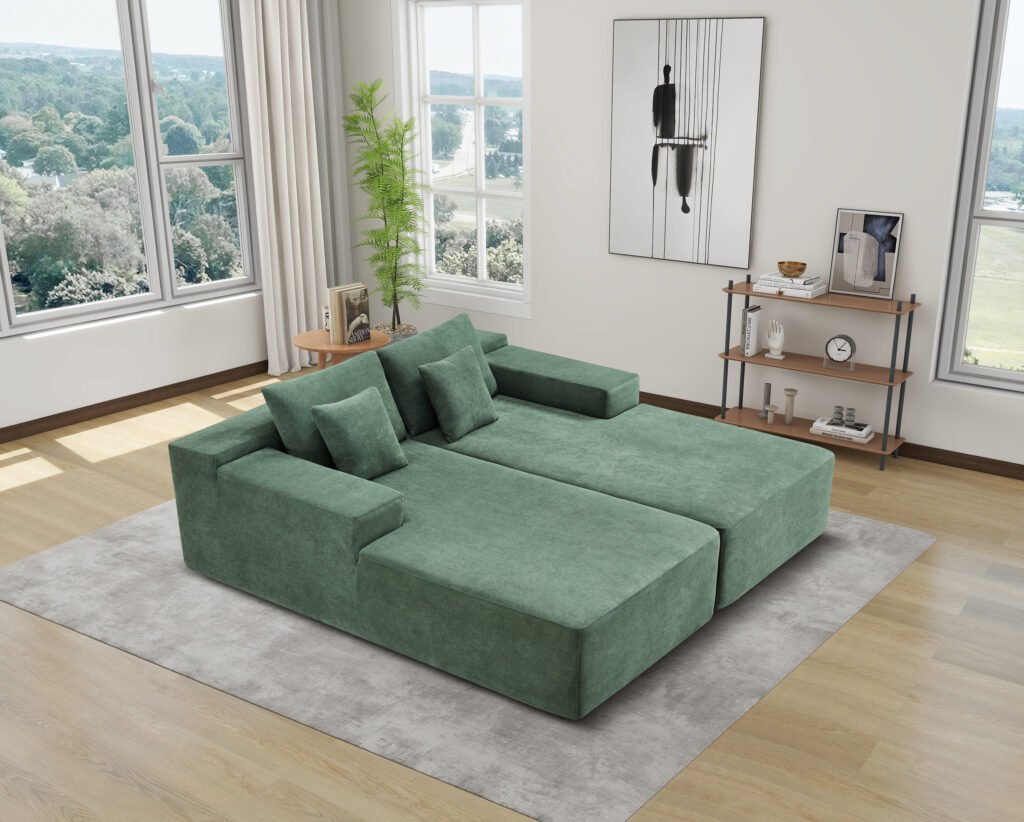For B2B companies in furniture manufacturing, wholesale, and retail, understanding how compress packaging impacts sofa foam quality over time is critical for product design, quality assurance, and customer satisfaction. Compress sofas are vacuum-sealed and tightly packed to reduce shipping volume, but concerns often arise about whether this compression damages the foam or alters its comfort and durability. This article explores the effects of compress packaging on foam quality, drawing parallels from packaging science and providing actionable insights for business buyers and manufacturers.
How Compress Packaging Works and Its Impact on Foam
Compress packaging involves vacuum-sealing sofas to remove air and significantly reduce their volume for efficient transportation and storage. The foam inside, usually high-density polyurethane or advanced polymer sponges, is compressed to a fraction of its original thickness.
- Temporary Compression: The foam’s cellular structure is elastomeric, meaning it can deform under pressure and return to its original shape once released. This memory effect allows foam to withstand compression without permanent damage.
- Airflow Restriction: Vacuum sealing limits airflow, temporarily trapping volatile organic compounds (VOCs) and moisture, which can affect foam odor but not its structural integrity.
- Recovery Time: After unpacking, foam requires time to fully rebound and regain its original resilience and comfort levels.


Does Compression Cause Long-Term Foam Degradation?
Research and industry experience indicate that when done correctly, compress packaging does not cause long-term degradation of foam quality:
- Durability Maintained: High-quality foam is designed to endure repeated compression cycles without significant loss of support or elasticity, much like honey stored in glass jars retains its quality due to protective packaging1.
- Material Selection Is Key: Premium foams with higher density and resilience perform better under compression, making material choice crucial for manufacturers targeting B2B clients demanding durability.
- Packaging Duration Matters: Extended storage times under compression may slightly delay foam recovery but do not inherently degrade foam if environmental conditions (temperature, humidity) are controlled.
B2B Considerations for Compress Packaging and Foam Quality
1. Material Innovation and Testing
Manufacturers should invest in foam materials specifically engineered for compress packaging, with rigorous testing to ensure performance post-compression. This reduces product returns and enhances brand reputation.
2. Supply Chain and Storage Environment
Maintaining stable temperature and humidity during storage and transit preserves foam integrity. B2B logistics partners must ensure warehouses and transport conditions minimize exposure to extremes that could affect foam quality.
3. Customer Education and Communication
Retailers and wholesalers should inform end customers about the normal rebound period after unpacking compress sofas. Clear communication reduces dissatisfaction and return rates.
4. Sustainability and Waste Reduction
Compress packaging reduces shipping volume and carbon footprint, supporting sustainable business practices. Selecting recyclable or biodegradable packaging materials further aligns with environmental goals, appealing to eco-conscious B2B buyers.


Comparison with Traditional Sofa Packaging
| Aspect | Compress Packaging | Traditional Packaging |
|---|---|---|
| Shipping Efficiency | High; reduces volume by up to 70% | Low; bulky and heavy |
| Foam Stress | Temporary compression with recovery | Minimal compression, no rebound needed |
| Risk of Foam Damage | Low with quality materials and handling | Low, but higher shipping damage risk |
| Environmental Impact | Lower carbon footprint due to compactness | Higher due to larger transport volume |
| Customer Experience | Requires education on rebound time | Immediate use, no rebound delay |
Conclusion
Compress packaging, when properly executed with high-quality foam materials and controlled storage conditions, does not negatively affect sofa foam quality over time. Instead, it offers significant advantages in shipping efficiency and sustainability, critical for B2B companies aiming to optimize costs and meet environmental standards. By focusing on material innovation, supply chain management, and customer communication, manufacturers and retailers can ensure compress sofas deliver lasting comfort and durability, strengthening their market position.